Pigments in Sun and Shade Conditions
! [clorofila.jpg] (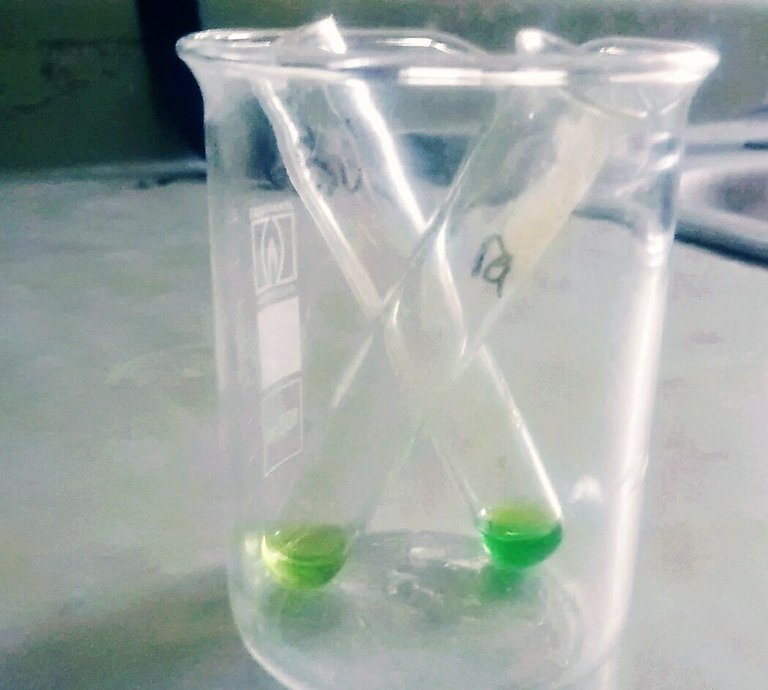 )
)
Fig 1.Extraction of photosynthetic plant pigments in sun and shade.
! [clorofila 2.jpg] (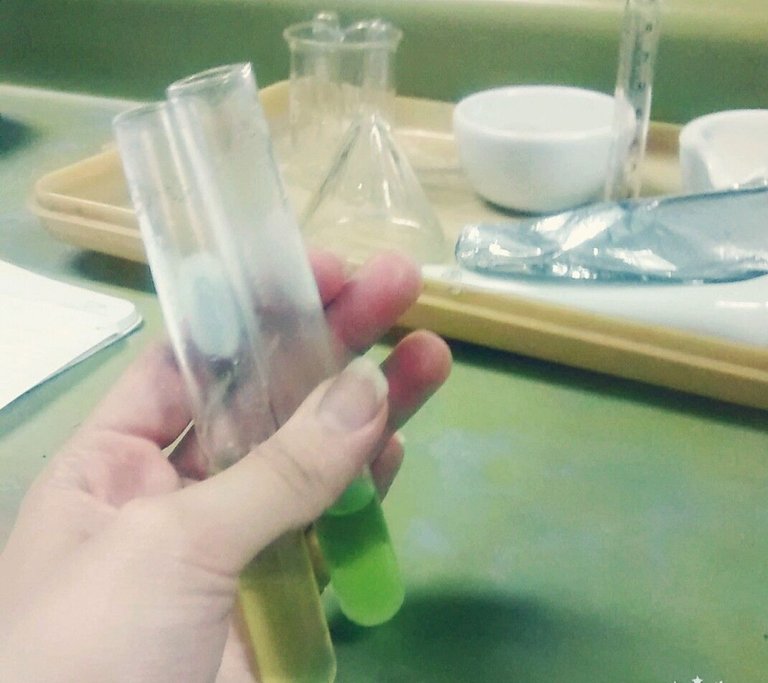 )
)
Fig 2. Test tubes with pigment extract
In Figure 2 it can be better appreciated the difference in shade in terms of the plant in shade conditions and light conditions
Extracted Pigments
Plants have various pigments called "accessory pigments" and other essentials such as chlorophylls (chlorophyll a and chlorophyll b), among the accessories we have beta carotenes and xanthophylls.These pigments were extracted by cutting 10 discs from the leaves of the plants with a hole, macerating the sample with a mortar adding calcium carbonate to regulate the pH caused by the rupture in the vacuoles and adding a solvent of slightly apolar nature such as 100% acetone, then the mash was filtered and added in test tubes wrapped in aluminum foil and cold stored to avoid enzymatic action.
The differentiation of these pigments lies in their structures since some may be more polar than others. These can be studied by thin layer chromatography where the plate is a fairly polar compound (silica gel) and the solvent set is apolar in nature (benzine, isopropanol). Finally, 50 drops of both pigment samples (sun and shade) were planted and left in the chromatography chamber for 2 hours. </ div>
(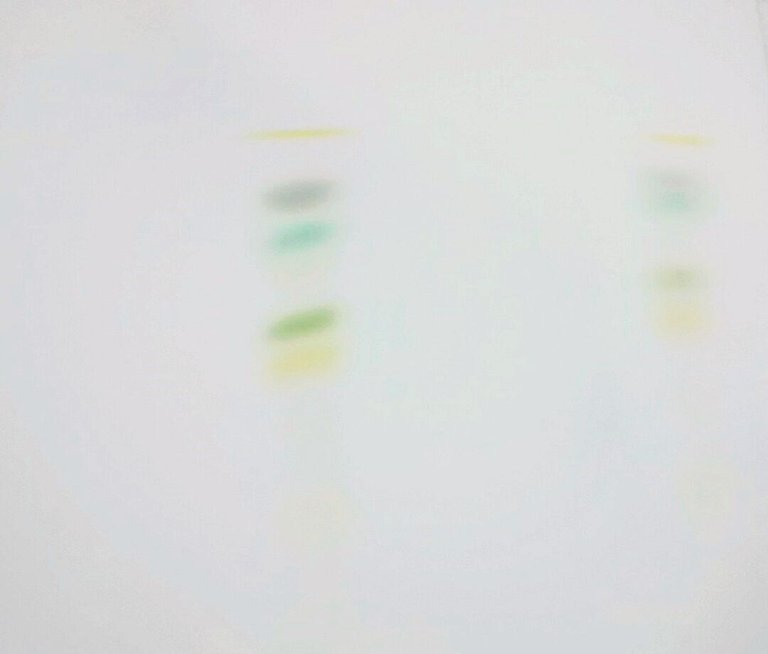 )
)
Fig 3. Pigment chromatogram extracted from the plant in sun and shade.
When looking at figure 3 the first thing to observe is the intensity of colors of one sample versus the other, this is due to the above explained (the concentration of pigments in shade plants) however you can see different colors, ie it exists in it shows something more than chlorophyll. The reason for the appearance of each pigment in order from top to bottom will be explained.
.
Betacarotene
Figure 3 shows how the first yellow spot, are accessory pigments with the protection function of the plant to radiation, are of apolar nature so they run a greater distance because they have less affinity for the stationary phase (plate silica gel) which is polar and runs freely with the solvent front which is the mobile phase which is apolar.
! [beta.jpg] ( )
)
reference: http: //www.sbsportlive.com/suplementacion-con-beta-caroteno-en-el-triatlon/
the next gray spot is not pigments associated with the plant if it is not the degradation of some by the action of acids in the vacuole at the time of cutting the leaves, it is the pheophytin that is part of the degradation of chlorophyll.
Chlorophyll a
Represented as a bluish green stain, it differs from chlorophyll b because it does not have the aldehyde group, which makes it less polar and can interact better with the mobile phase.
Chlorophyll b
It is presented in figure 3 as a green color and this is more polar because it has an aldehyde group.
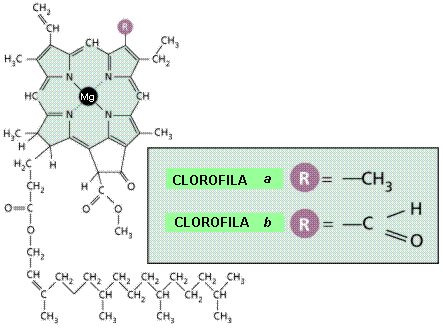 ) </ center>
) </ center>ref: http://www.efn.uncor.edu/departamentos/biologia/intrbiol/fotosint.htm
Finally, in the chromatogram, xanthophylls are observed, which are accessory carotenoid pigments that are represented with a yellow color and are polar in structure. When visualizing the following image they consist of two OH groups that provide a great polarity to the molecule due to the formation of hydrogen bonds and intermolecular forces.
 ) </ center>
) </ center>ref: http://xantofilas-dc.blogspot.com/
It is interesting to observe how the lighting and structural conditions affect the pigments.
! [vicky.jpg] (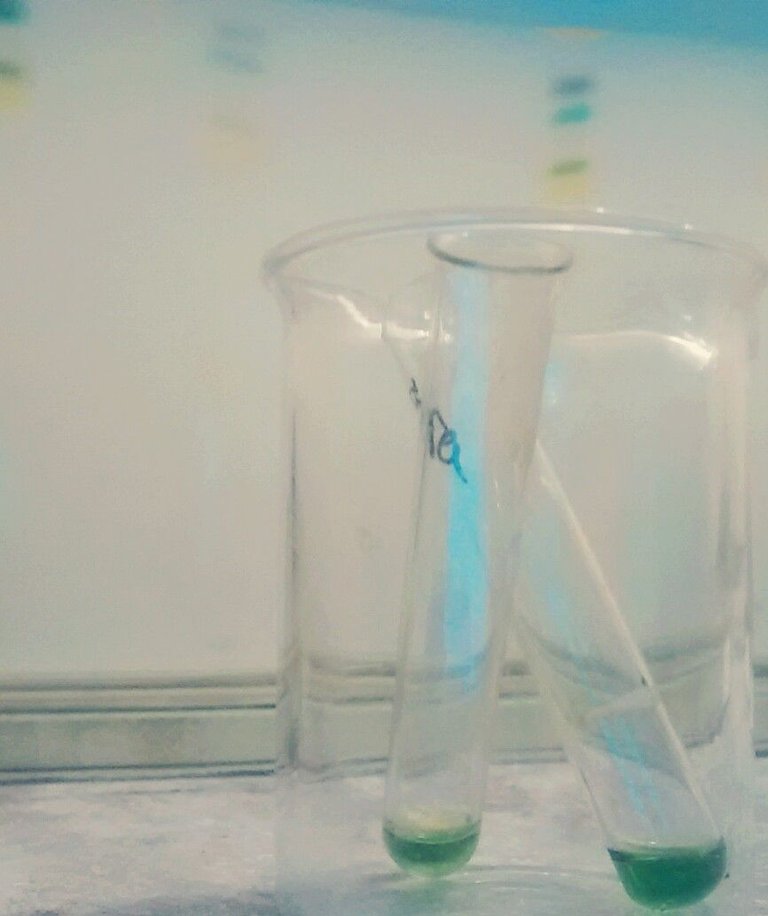 )
)
This is a work done in the Plant Physiology Laboratory of the UCV School of Sciences, photos taken by @vicokiwi
I would certainly like reading about laboratory experiments on plants and colors and anything actually. I upvoted this for your effort.
However, I have a question and some suggestions. First the question: I don't understand which plant had a higher concentration of pigments. The one in the shade or the one in the sun? You say that the one in the shade needs more chlorophyll to have effective photosynthesis. So does this mean that the one in sunlight will need less?
And you should probably not use the "steemit" tag since this is not about the website or the company. I don't know. It will also help if you find some references for your facts as well as for your images. Also consider using the "steemstem" tag and joining the @steemstem channel on steemit.chat for help with stuff like this.
@zycr22
Thanks for reading, I can answer the questions in this case for that plant which has the highest concentration of pigments is the plant in shady conditions, since when sowed in the absence of light stress it will create more pigments to capture the minimum amount possible light for its physiological processes, however that does not take away from the fact that the plant in sun conditions does not need its pigments, the plant in sun will use its pigments for photosynthesis